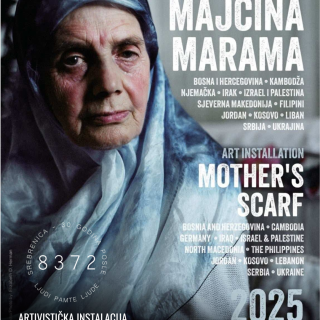Once upon a time is usually how every fairy tale begins, but in this case, it is how a war story begins. More than an exhibition, this is a memorial dedicated to all the children killed and missing as a result of the Kosovo war. Through their personal belongings we take a glimpse into their young lives and come across the circumstances of their premature death. Between bullets and tales, the exhibition reveals a world that is similar to a fairy tale and should have never been part of our reality.
Little has been done to memorialize the past in Kosovo, as the state has not given much attention to commemorating civil victims. For two decades, there was one vulnerable group that was not mentioned – the children. According to the data from the Humanitarian Law Center (HLC) and Humanitarian Law Center Kosovo (HLCK) , 1,133 children were killed or went missing as a result of the war in Kosovo. This figure accounts for 10% of the total number of civilian victims.
Remembering the Killed and Missing Children
Recognizing the importance in remembering the children, the HLCK started contacting the families of the killed and missing children and jointly formed a concept on what today is the “Once Upon a Time and Never Again” exhibition.
The HLCK already had the personal information of all the children (names, surnames, dates of birth and death, in most cases photographs too) and the factual information on how they were killed, as a result of the Kosovo Memory Book – a joint project with Humanitarian Law Center.
Whereas the families had memories of life shared with them, and in some cases, few of their personal belongings, which they cherish ever since.
To merge the factual side and the emotional side in a symbolic and artistic way, we collaborated with Blerta Hocia, a curator. As the exhibition was shaping up, four elements emerged: the list of names, Gramoz Berisha’s audio, the Glass Room, and the Wall of Portraits.
The Exhibition “Once upon a time and Never Again”
The first thing we encounter when we walk into the exhibition is the list of names. Faced with a 16-meter wall, the mass of numbers and letters begin to make more sense as we move closer and start to read the names of the 1,133 children killed and missing as a consequence of Kosovo war.
While still trying to process what we are looking at, our attention switches to what can be heard from the distance. It is the voice of Gramoz Berisha, one of the few survivors of the “Kalabria” pizzeria massacre, telling his story of survival and loss. As Gramoz, then a child, recounts how he pretended to be dead so as not to be noticed by the Serbian forces who were transporting the bodies of his family members who had just been killed, the room fills the being with the void of light, which is necessary to imagine the darkness of his journey. As his story is on repeat, and the words begins to blur, while we exit the dark room, we walk through the wall again. This time though, the 1,133 names make us think of the individual circumstances of each of their deaths.
From the darkness of the room, we enter into a peaceful bright space where we see objects covered in glass, some of them sleepily floating as if they are inside a fairy tale – to remind us that we have entered into the world of children. The objects and garments within the glass boxes cease to be mere objects and garments. They are transformed into personal histories that follow the very presence of the children.
In between the items, a wall of portraits grabs our attention, and we suddenly gaze into the smiling faces of more than 500 photos of children that hang in abeyance. In this dreamlike scene, each photo projects itself onto the wall, giving us the feeling as if it is bearing the shadow of the missing portraits.
Through this exhibition, the HCLK has created a physical space to keep alive the memory of children killed and missing as a result of the Kosovo war. It serves as a reminder of the consequences of war.
Exhibition Information
Since its opening in 2019, at the request of interested families, new items and stories of children have been added to the exhibition. The HLCK is seeking possibilities of institutionalising the exhibition by finding a public permanent space, where it could present more stories of children, and thus become as the only war museum in Kosovo.
With the support of forumZFD, the catalogue of the exhibition was published in 2020. Read the catalogue here. For all the readers who are not able to visit the exhibition in person here is the link for the virtual tour
Dea Dedi has studied criminal law in the University of Pristina and she is doing her MA in Philosophy. She has been working in war-related topics for about 10 years. Dea has held different positions at HLCK and worked with EULEX and she is currently the manager of the Documentation Centre Kosovo (DCK) which is HLCK’s public space.




